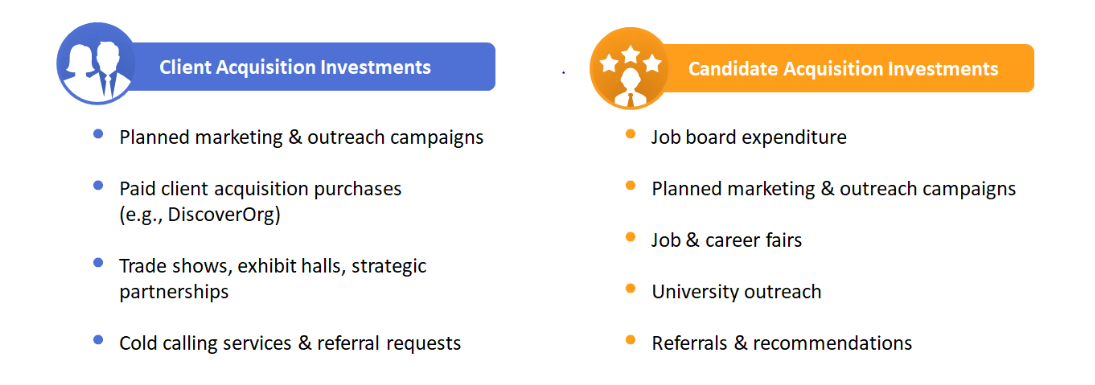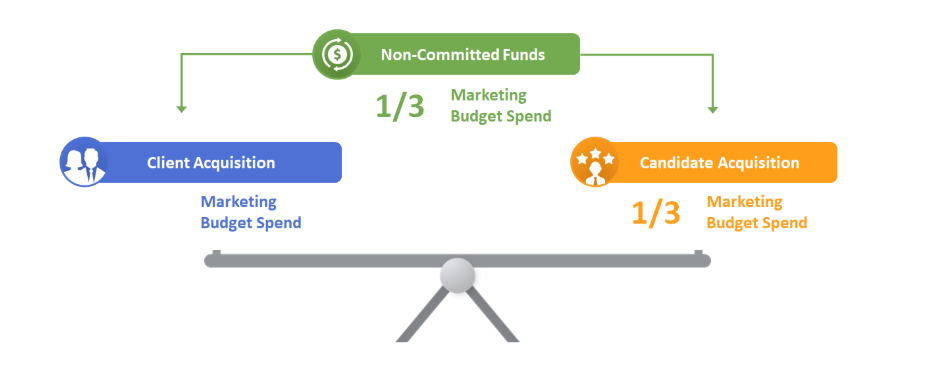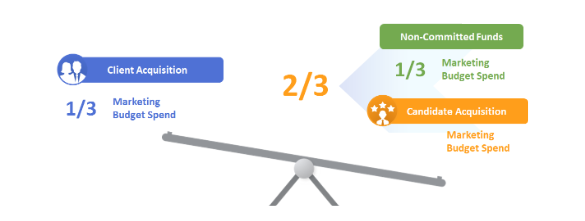In the wake of COVID-19, companies are preparing for global economic contraction. In this session, Peter Velikin discusses how firms can still prepare their staffing marketing budget for a recession while remaining effective.
Watch the Replay
Presenter: Peter Velikin (VP of Marketing, Ceipal Corp.)
Experts are predicting that the economic downturn from COVID-19 will result in the worst recession since WWII. Staffing agencies worldwide are looking to cut their bottom line and increase profitability. That means restrategizing, revising, and rethinking your entire budget—including marketing.
But preparing your staffing marketing budget for a recession isn’t as daunting as it seems. In fact, with a few simple questions, you can determine where you should allocate your funds, how flexible you should be, and what kind of marketing tactics you should leverage. Here’s how.
Determining Your Baseline Marketing Strategy
For marketing in the staffing industries, there are two main targets: clients and candidates. At any given moment, you want your marketing efforts to be focused on one or the other. To figure out which, ask yourself:
- If you doubled your candidate database, do you have enough job requisitions to successfully place twice as many candidates?
- Do you have a strong foundation of clients who would happily provide referrals and recommendations?
- Do you consistently redeploy consultants successfully?
If the answer to the above questions is “yes,” you should focus on client acquisition marketing.
Alternatively…
- If you doubled your open job requisitions, would you be able to successfully place twice as many candidates?
- Is your current placement success rate below 50%?
- Do your recruiters source talent from your database, or do they rely on external sources?
If the answer to the above questions is “yes,” you should focus on candidate acquisition marketing.
Developing Your Marketing Approach
Once you’ve identified your baseline marketing strategy, it’s time to determine your approach. Obviously, how you’ll market depends on who you’re marketing to. Some basics to get you started are as follows:
Remember: most of these marketing techniques require contractual obligations for staffing firms. That means that once you invest in them, your funds are committed for the entire year. And that means your staffing marketing budget is not liquid.
The 3 Thirds Rule
Some years, having a non-liquid marketing budget is fine. For example, before COVID-19 hit, there were historically low unemployment rates, skyrocketing demand for skilled talent…and as a result, almost all staffing firms were 100% invested in candidate acquisition.
The danger of this strategy became apparent with COVID-19. Suddenly, millions of qualified candidates were on the job market again. Marketing efforts needed to be redirected toward client acquisition. The question was: how could firms pivot and drastically change their marketing strategy on the fly?
The answer lies in the 3 Thirds Rule, which goes something like this:
Always deploy ⅓ of your marketing budget to client acquisition, ⅓ of your budget to candidate acquisition, and use ⅓ as a buffer, ready to boost your strategy.
In a normal year, the ⅓ Non-Committed Funds can be contributed to your baseline marketing strategy, so long as the money is not contractually spent. In an abnormal year, however, such as 2020, these non-committed funds can act as a buffer, helping you pivot on the fly to address radical changes in the marketplace.
A Firm Focused on Candidate Acquisition Pre- COVID-19
A Firm Focused on Candidate Acquisition Post- COVID-19
Using the 3 Thirds rule, then, a firm’s marketing budget should always look something like this:
















